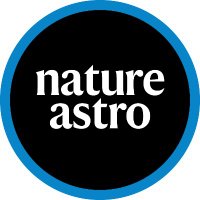
Nature Astronomy
@natureastronomy
A Nature journal dedicated to presenting the very best research across the disciplines of astronomy, astrophysics, cosmology and planetary science.📡
ID: 3832891391
https://www.nature.com/natastron/ 01-10-2015 11:06:50
6,6K Tweet
42,42K Followers
1,1K Following





Astrophysicist Paolo Padoan may have solved one of astronomy’s biggest mysteries: why some planet-forming disks are so big. His new study, published in Nature Astronomy, offers a fresh answer and could reshape how we understand star and planet creation. bit.ly/4m13wbO

The cascade of kinetic and magnetic energy from large to small scales in galactic-style turbulence behaves significantly different to the theoretical models that we usually assume work. nature.com/articles/s4155… Published in Nature Astronomy.



Extremely high-resolution simulations reveal that interstellar medium-type turbulence significantly deviates from classical magnetized turbulence models. Dr. James Beattie et al.: bit.ly/42Z1wJF / bit.ly/42Zfjjl Princeton University Canadian Institute for Theoretical Astrophysics Science & Medicine at ANU LRZ

By fusing constraints from satellite dynamics and spin angular momentum, Konstantin Batygin & Adams show that young Jupiter had a radius twice its current value, a ~21 mT magnetic field, and was accreting material at a rate of one Jupiter mass per million years. bit.ly/45jEbUg



